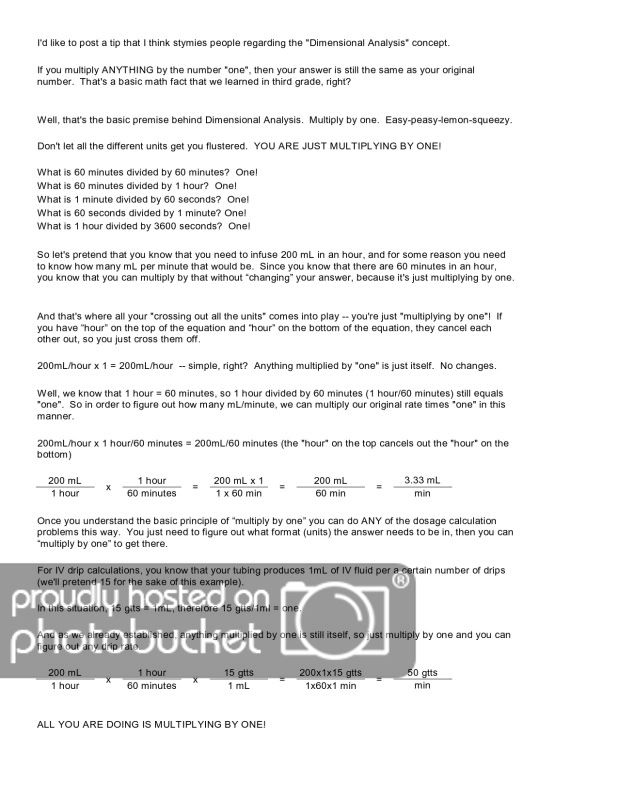- Community
-
Programs
- Schools
-
Careers
- RN Specialties
- Best RN Jobs and Salaries
- Aesthetic Nurse
- Nursing Informatics
- Nurse Case Manager
- NICU Nurse
- Forensic Nurse
- Labor and Delivery Nurse
- Psychiatric Nurse
- Pediatric Nurse
- Travel Nurse
- Telemetry Nurse
- Dermatology Nurse
- Nurse Practitioner
- Best NP Jobs and Salaries
- Family NP (FNP)
- Pediatric NP
- Neonatal NP
- Oncology NP
- Acute Care NP
- Aesthetic NP
- Women's Health NP
- Adult-Gerontology NP
- Orthopedic NP
- Emergency NP
- Psychiatric-Mental Health NP (PMHNP)
- APRN
- Nurse Educator
- Nurse Administrator
- Certified Nurse Midwife (CNM)
- Clinical Nurse Specialist (CNS)
- Certified Registered Nurse Anesthetist (CRNA)
- Resources
- Education


Music in My Heart
1 Article; 4,111 Posts
For reasons of which I'm not really sure, I'm inclined to start a thread populated with med math examples. I'm going to pose some questions and then work them through. I'm going to utilize an equation editor so that they're very easy to follow (the AN text editor really lacks in this regard). They'll show as images.
If you have specific questions that you'd like addressed, PM me and I'll use those for future additions to the thread.
Please refrain from posting problems in the thread simply because I'm hoping to keep it tidy and not end up with multiple people posting the same answers over and over and I'd like to avoid the mess that the text editor creates.
I'll also entertain chemistry or physics problems (meaning NOT explanations of concepts but simply worked out examples).
Here's the first one ~~~~~~~~
The physician orders an insulin drip at 8 units per hour. Your facility policy states that insulin must be mixed by placing 100 units in a 100 mL bag of NS. However, due to a recent shortage, you only have 50 mL bags of NS.
How much insulin do you place in the bag?
At what rate (mL/hr) do you set your pump?
How much insulin will the patient have received after 20 minutes?